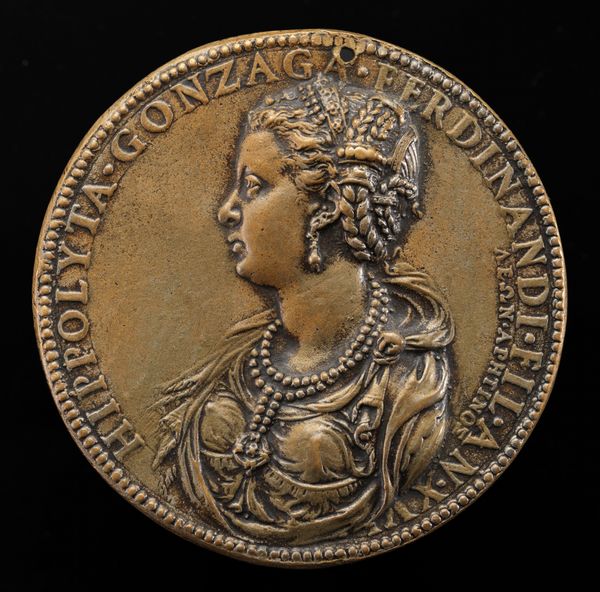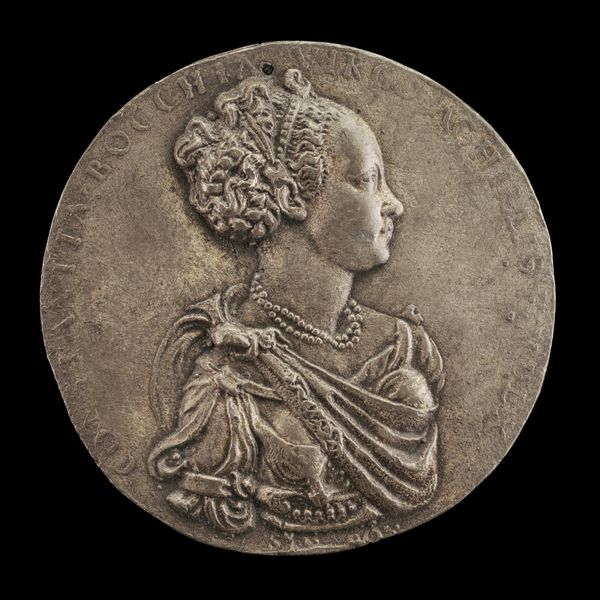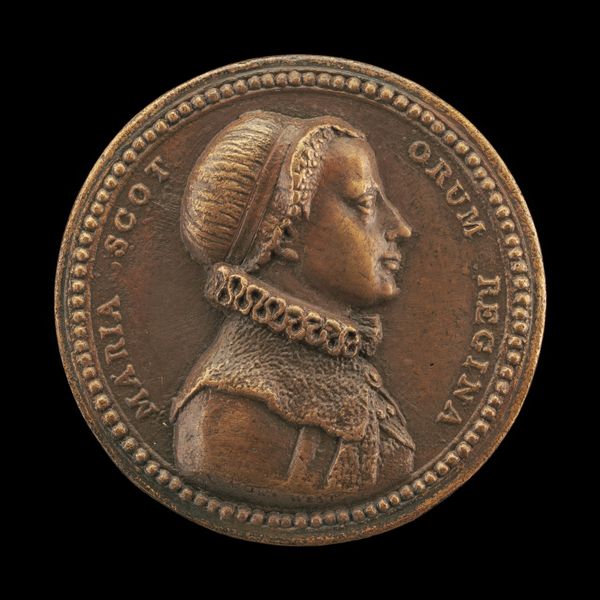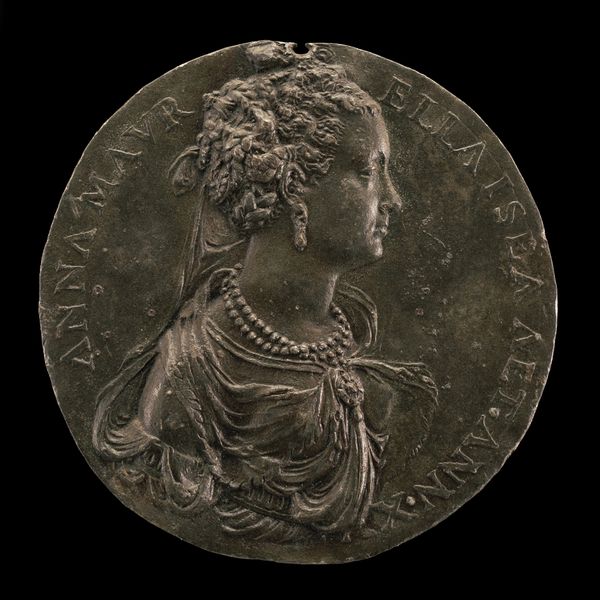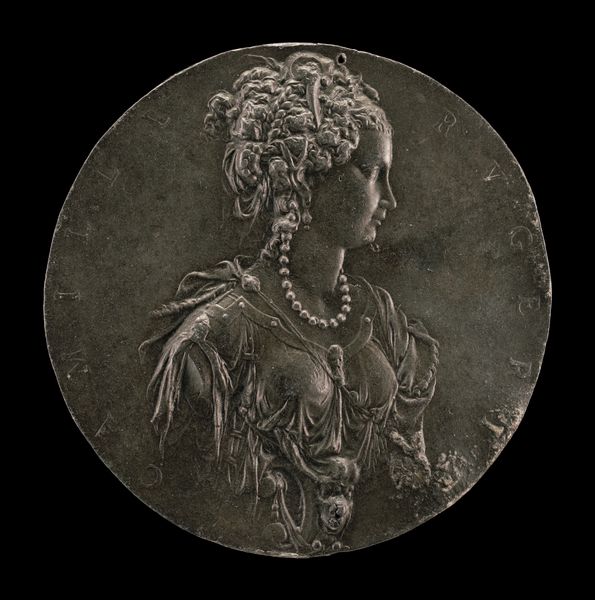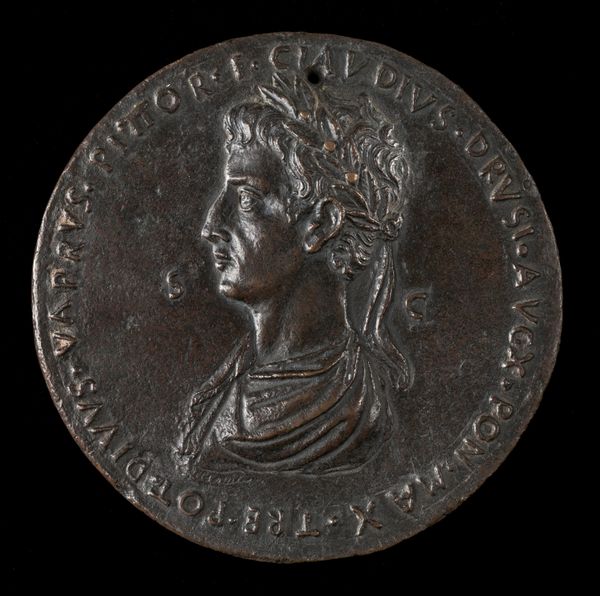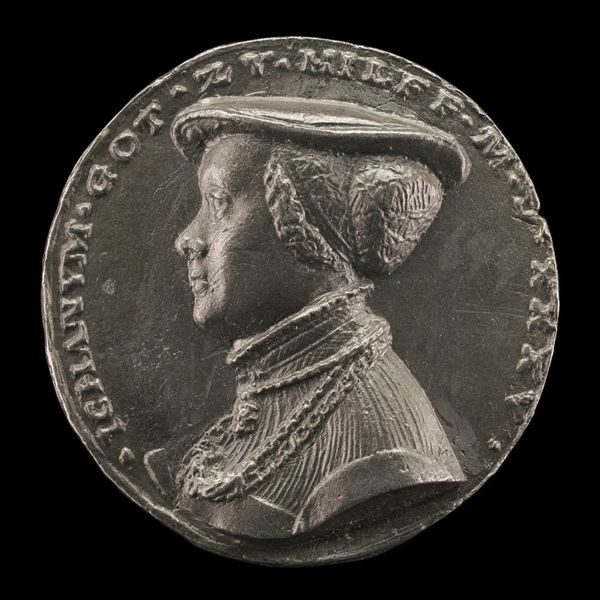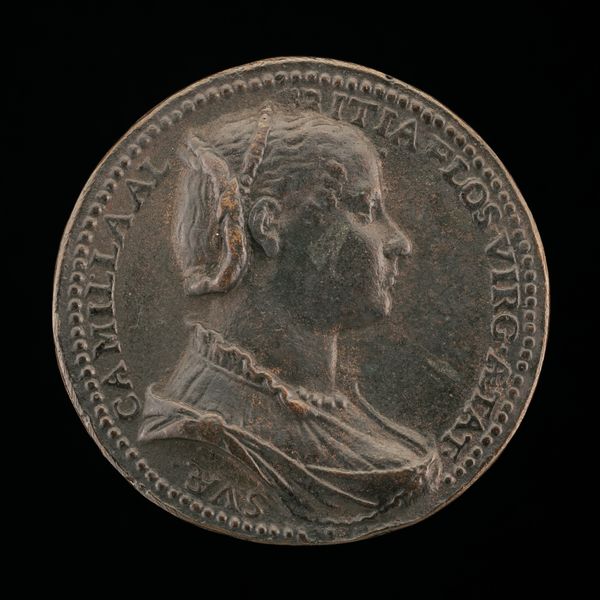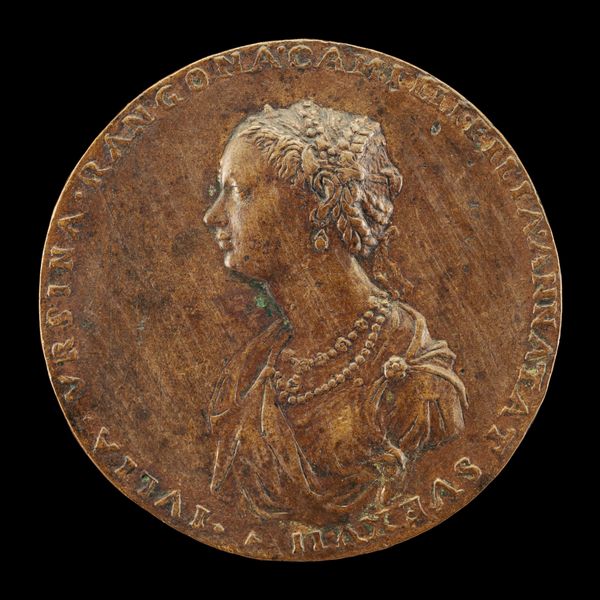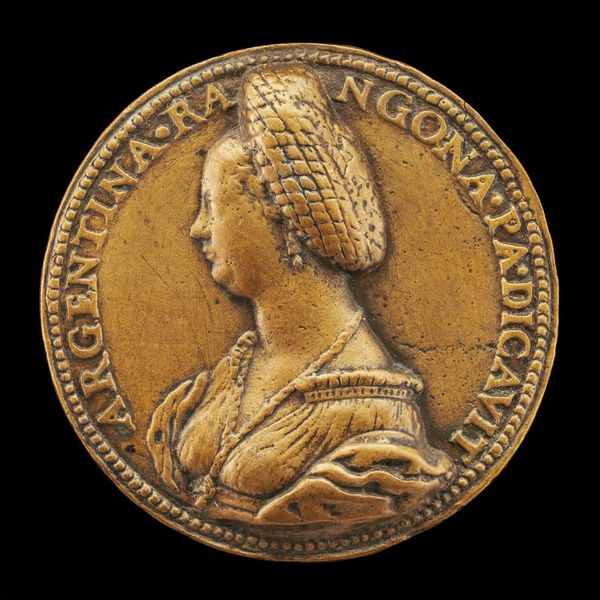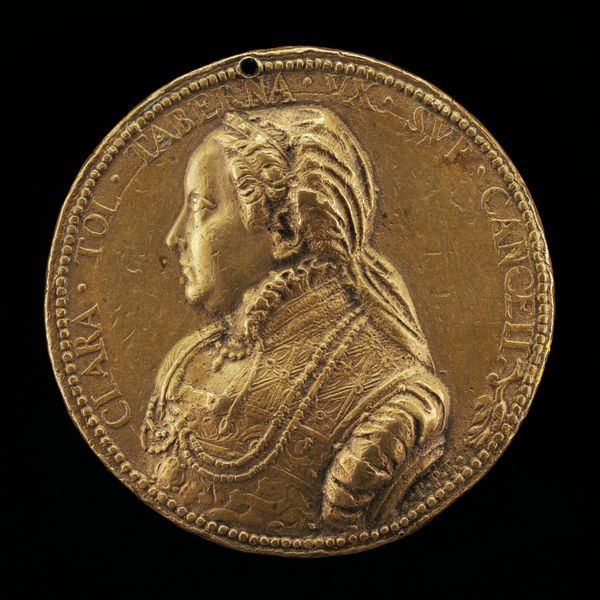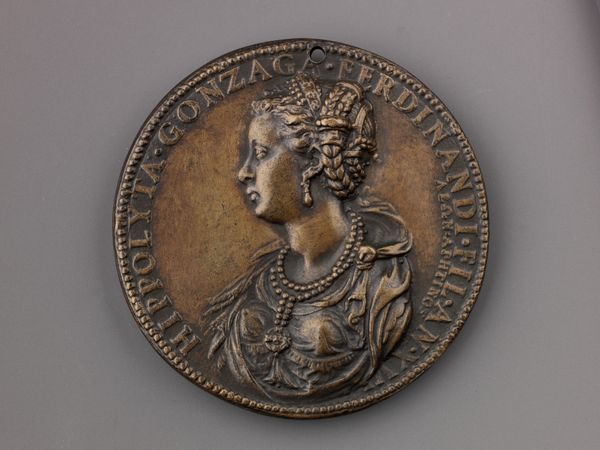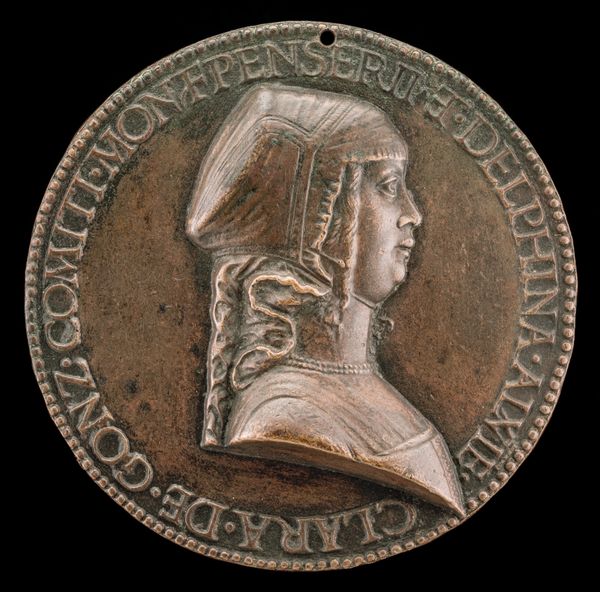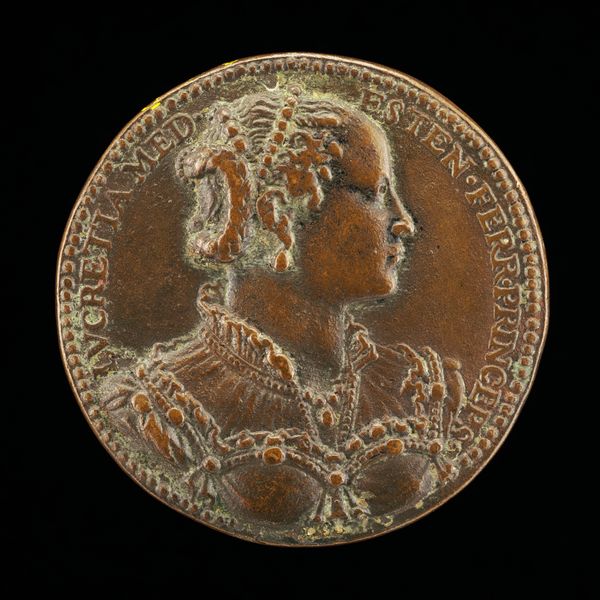
metal, sculpture
#
portrait
#
medal
#
metal
#
sculpture
#
mannerism
#
sculpture
#
italian-renaissance
Dimensions: overall (diameter): 6.97 cm (2 3/4 in.) gross weight: 35.34 gr (0.078 lb.)
Copyright: National Gallery of Art: CC0 1.0
Curator: Leone Leoni fashioned this metal medal depicting Ippolita di Ferdinando Gonzaga around 1551. The work stands as a beautiful exemplar of Renaissance portraiture in a scaled-down format. Editor: It has a somewhat melancholy presence to me; though it's a small object, it has this rather somber and perhaps self-serious character through the rigid profile and metallic sheen. Curator: Ippolita's profile speaks volumes. Placed strategically within her historical context, such imagery and personal display held enormous social capital. Numismatics, the study of currency, medals, and other such objects, informs our appreciation of the politics of imagery inherent in its distribution. Editor: Indeed. To think about the labour involved in the intricate metalwork is quite stunning, though! Every bead and line so painstakingly etched – the mastery of the material itself serves its propagandistic function in full, emphasizing her rank and elegance. It even presents some ideas of luxury and class. Curator: Precisely! Medals were not just commemorative objects, but political statements, underscoring the subject’s place in society. Considering the Italian Renaissance obsession with classical forms, we can begin to understand the importance such portraiture had in emulating ancient virtues and the power inherent within familial imagery. Editor: It’s not just about representation; it is the crafting that matters. The way Leoni manipulated this rather hard, inflexible material is truly wonderful. He highlights how metals, often extracted through great physical exertion in harsh conditions, also served the elite patrons, such as the Gonzaga family, for imprinting power. Curator: Reflecting on Ippolita's portrait through this Mannerist lens allows us to perceive art's capacity as both aesthetic accomplishment and shrewd political apparatus, revealing a nuanced dance between representation and social forces. Editor: And thinking through the meticulous, skillful manufacturing required to realize such emblems serves to amplify both admiration and deeper consideration about material culture that once was and, ultimately, the people both enabling and benefitting from its means.
Comments
No comments
Be the first to comment and join the conversation on the ultimate creative platform.
